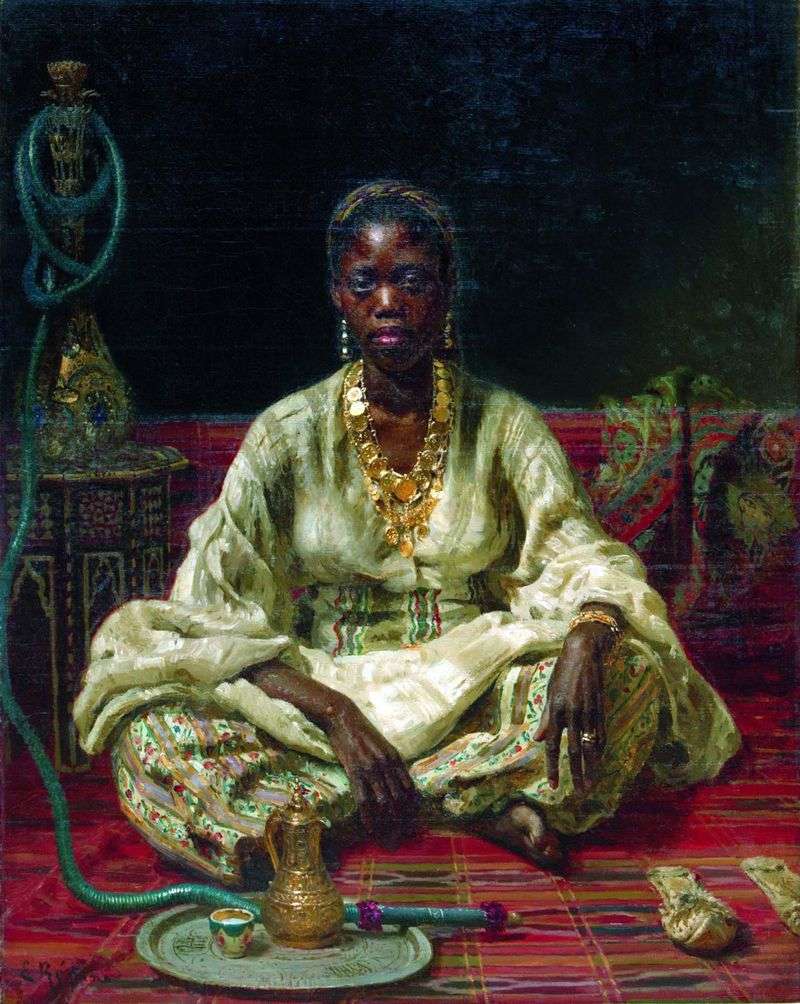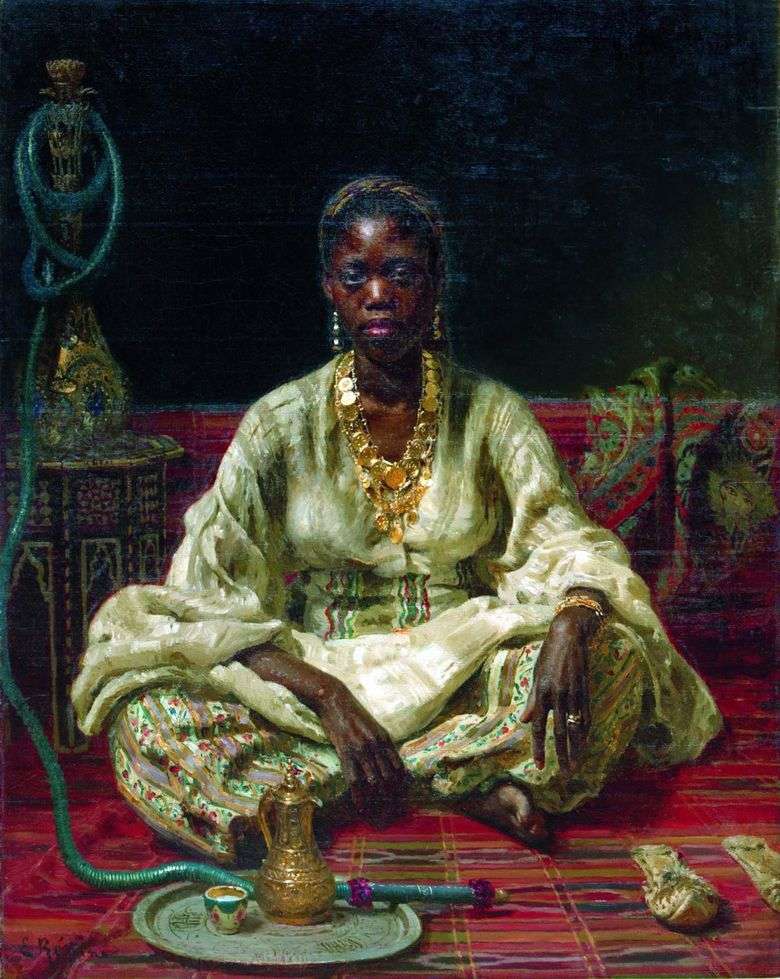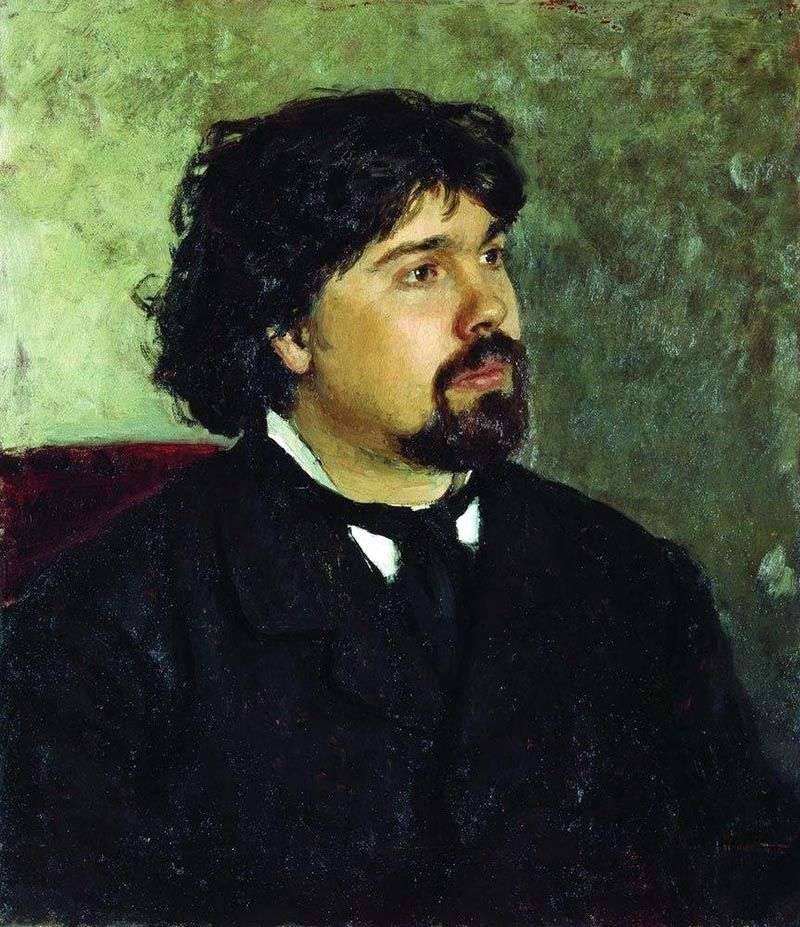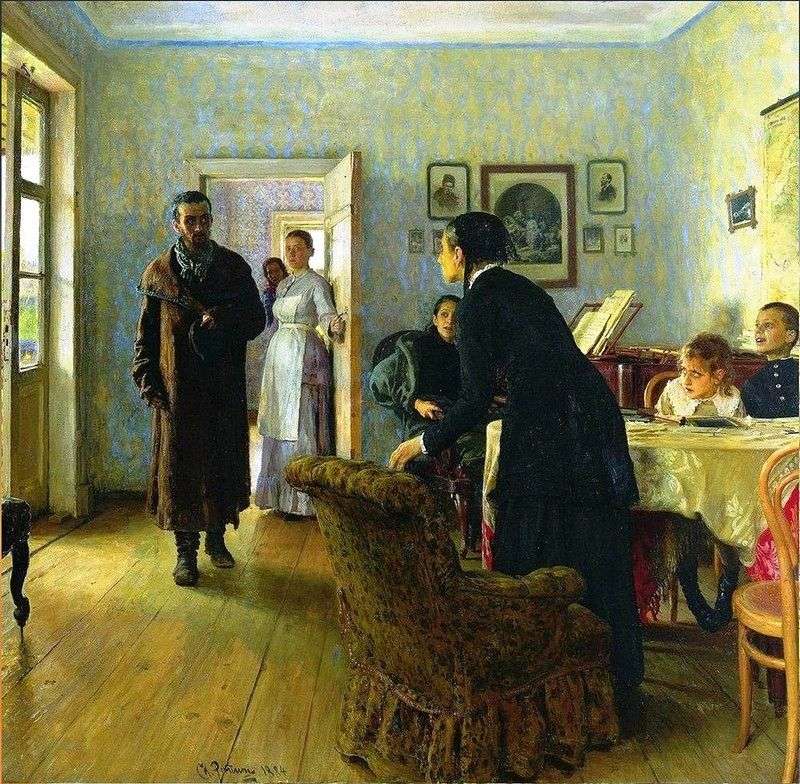
The painting was executed by Repin during his stay in Paris as a pensioner at IAH. In the work one feels the passion for the work of the famous Spanish artist Mariano Fortuny – one of the most talented representatives of the academic salon art.
Fortuny Repin met with works in 1873 in Rome, then in 1875 at his posthumous exhibition in Paris and was overwhelmed by his characteristic “inaccessible grace and sense of form, color and power of light.”
In his picture, Repin was striving for the plastic completeness of the form and the integrity of the color solution. The image of a black woman is inspired by, perhaps, African sketches of Fortuny. Repin creates an expressive, not devoid of spirituality portrait, interpreted without any deliberate admiration for exotic. The artist was able to identify a noble ratio of muted colorful tones and achieve the finest color nuances given in a single warm gamut.
He showed great craftsmanship in the image of shimmering gold jewelry, iridescent fabric, glittering hookah and other objects. His painting techniques are very diverse – from smooth face writing to relatively wide pastous strokes with which accessories are made. In the spring of 1876, Repin showed a picture at the exhibition of the Paris Salon, as reported by V. V. Stasov: “… I sent a sketch of a black woman to the exhibition, a tall figure, with tight legs, oriental.”
Sold then to an unknown private person, the work of almost half a century remained in complete oblivion, only in 1938 this canvas was discovered, acquired by the Russian Museum and soon included in the exhibition. I. N. Shuvalova
 Negro – Ilya Repin
Negro – Ilya Repin Vera Repin on the bridge in Abramtsevo by Ilya Repin
Vera Repin on the bridge in Abramtsevo by Ilya Repin Surgeon E. V. Pavlov in the operating room by Ilya Repin
Surgeon E. V. Pavlov in the operating room by Ilya Repin The ceremonial meeting of the State Council on May 7, 1901 by Ilya Repin
The ceremonial meeting of the State Council on May 7, 1901 by Ilya Repin Wandering haulers by Ilya Repin
Wandering haulers by Ilya Repin Portrait of V. S. Surikov by Ilya Repin
Portrait of V. S. Surikov by Ilya Repin Sadko by Ilya Repin
Sadko by Ilya Repin Did not wait by Ilya Repin
Did not wait by Ilya Repin